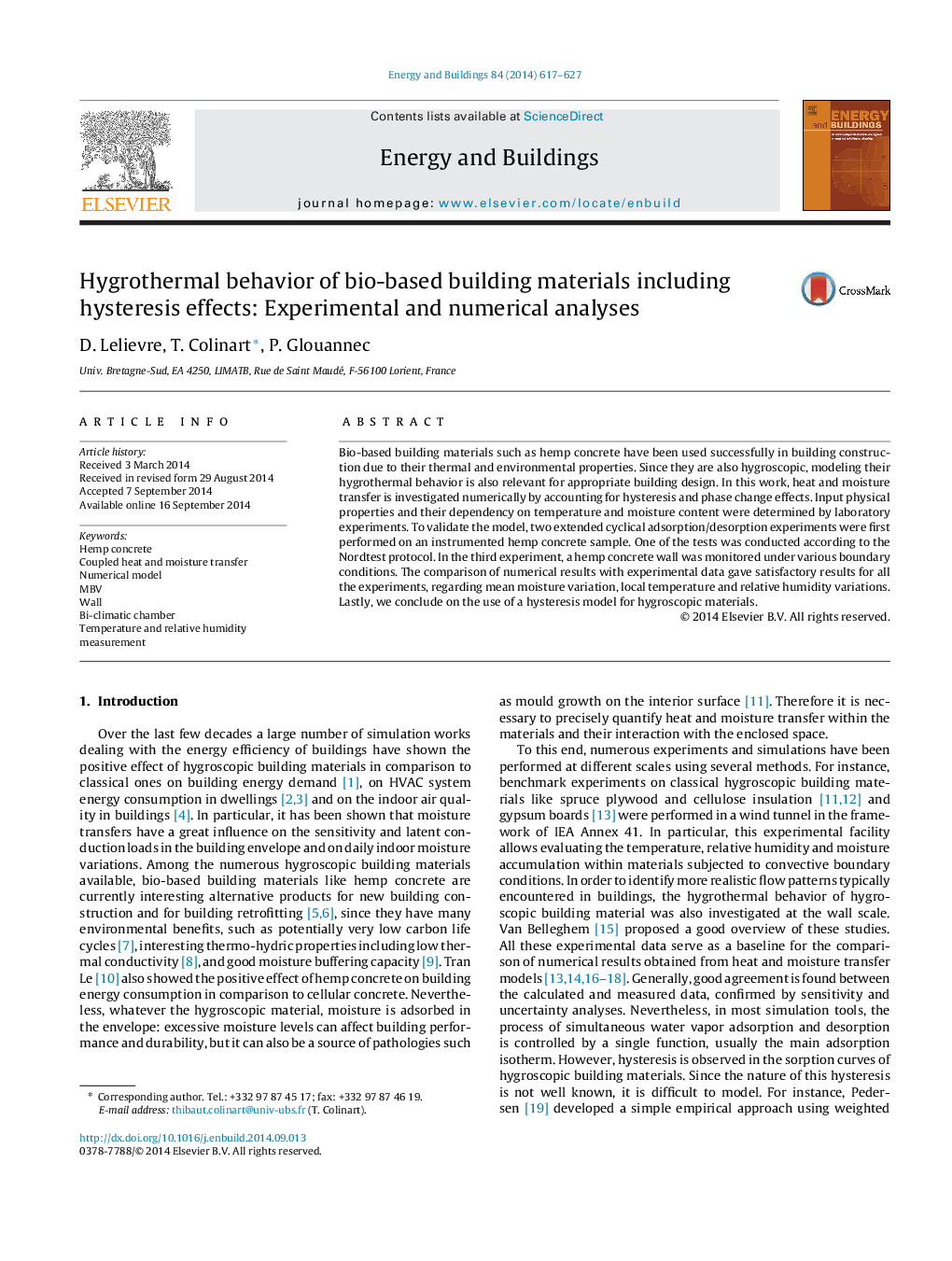| Article ID | Journal | Published Year | Pages | File Type |
|---|---|---|---|---|
| 262913 | Energy and Buildings | 2014 | 11 Pages |
•Moisture buffering is evaluated in hygroscopic building materials.•Hysteresis is modeled with Pedersen's and Mualem's model.•Coupled heat and moisture transfer is validated again experimental data at the material and at the wall scale.•Good agreement is found between numerical and experimental results.
Bio-based building materials such as hemp concrete have been used successfully in building construction due to their thermal and environmental properties. Since they are also hygroscopic, modeling their hygrothermal behavior is also relevant for appropriate building design. In this work, heat and moisture transfer is investigated numerically by accounting for hysteresis and phase change effects. Input physical properties and their dependency on temperature and moisture content were determined by laboratory experiments. To validate the model, two extended cyclical adsorption/desorption experiments were first performed on an instrumented hemp concrete sample. One of the tests was conducted according to the Nordtest protocol. In the third experiment, a hemp concrete wall was monitored under various boundary conditions. The comparison of numerical results with experimental data gave satisfactory results for all the experiments, regarding mean moisture variation, local temperature and relative humidity variations. Lastly, we conclude on the use of a hysteresis model for hygroscopic materials.
